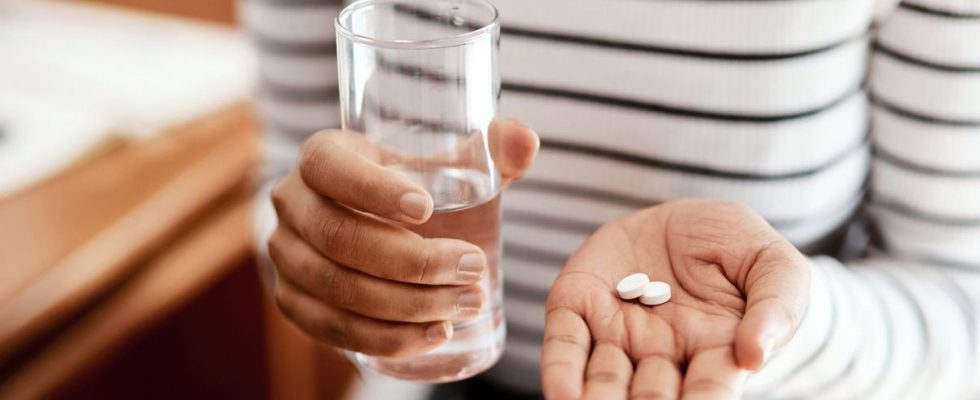Published on
Updated
Reading 4 mins.
Vanessa Ballestra Attali, ambassador of the Resoverneuil association, tells us about her fight against drug addiction. Relieved by morphine for years, she underlines the risks, the gears and the shortcomings of our society. A strong testimony as the Painkiller series on the opioid crisis is a hit on Netflix.
Vanessa Ballestra Attali is what we can call today a survivor. Struck from a young age by numerous pathologies which inflicted heavy treatment and chronic pain on her, only morphine could relieve her ordeal. A medicinal aid that gradually turns into an addiction until it makes him live through hell. Today weaned and listening to other people in full addiction, she gives us her message of hope.
Vanessa Ballestra Attali. “I suffer from what is called ‘multipathology’. That is to say that I suffer from Crohn’s disease, ankylosing spondylitis, Verneuil’s disease, and neuropathy of the legs. My Crohn’s disease is was declared when I was 8 years old, I then spent 4 years being very sick, and when the illnesses began to accumulate, my pain became interminable. I was hospitalized for 2 years and the hospital started m “inject morphine in a very controlled way. But the pain persisted, the pathologies had “cumulative” consequences and the pain became more intense. It was necessary to increase the doses of morphine much more often. is done under medical supervision, the dose became extremely high for 17 years. For a 50 kg girl, I managed to take the dosage for a 360 kg person. While some patients take morphine treatment of 20 mg / day, I was taking 180, 365 days a year!”
Was there a click?
“During 17 years, I had several withdrawal attacks, but one of them was dramatic. I was picked up by the Samu on a train. I then decided to be hospitalized, and weaned in an addiction service that took the measure of the situation. I was afraid of being considered a junkie, but I realized that 50% of the people there were followed like me for a drug addiction. I I saw caring doctors there, who could not completely stop morphine given my pathologies, but who taught me what was the need related to the pain and the need related to the lack. , I was put on methadone. Little by little, I was able to be put on replacement therapy, but it was a very long obstacle course.”
What is your view on the wave of addiction that hit the United States through the opioid crisis?
“For me, addiction comes from various interlocking factors. Pain plays a major role in the patient. When chronic pain is expressed, it can be so violent that nothing can soothe it. And a patient who is suffering, who is lacking, will be the best liar even if he is reasoned elsewhere. Faced with this, what can a doctor do to alleviate his pain, if not give a painkiller, he does not have 150 We cannot only incriminate the doctors, the patient can also do a lot to recover his dose, see several doctors, lie, etc. Finally, even if the addiction stops, the pain remains and persists. the appropriate substitute to treat it sufficiently to take over from the previous drug.
The laboratory behind the opioid crisis in the United States played on this complicated context. But who doesn’t? What is the laboratory that does not play on the suffering of patients? When a laboratory realizes suffering, it realizes that it is manna and that it can produce benefits. Let’s not be naive, if this company hadn’t done it, another one would have thought of it. It’s hard to hear, but addiction is also a commercial business.”
Is there a way to prevent these opioid addiction problems?
“In France, the problem of addiction to morphine, and to drugs in general, is enormous. AND we do not take the measure of it. The only prevention would be for doctors to be more aware of pain and its management. When a patient consults, it is very often that he is at the end of his rope, that nothing is working.Before going to morphine, there is the option of pain relief centres.
Finally, the real addictology services, the CSAPAs, are few in number. There are between 1 and 2 years of waiting to be received, an unthinkable delay when you suffer on a daily basis. As for the doctors, they have so many patients that they no longer have time to discuss understanding why the pain arose, to take into account the surrounding context. Of course, there are still “super-doctors”, I met one, but it takes time.
Despite everything, it is very important to say it: thanks to the entourage, a good knowledge of oneself, of one’s needs, good medical follow-up with the right people, one can get out of addiction. I succeeded, because I was helped. It’s very long, it’s not counted in weeks but in years, but we get there, we can get out of drug addiction.
Also read:Painkiller: the opioid crisis told by Netflix also hits France”
